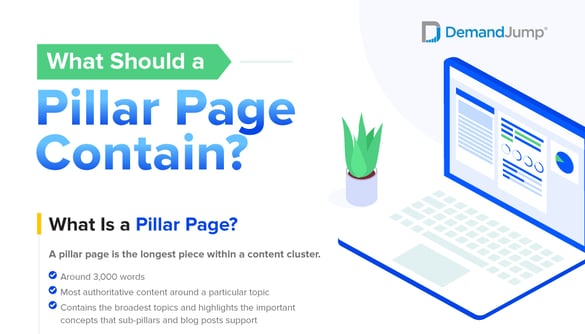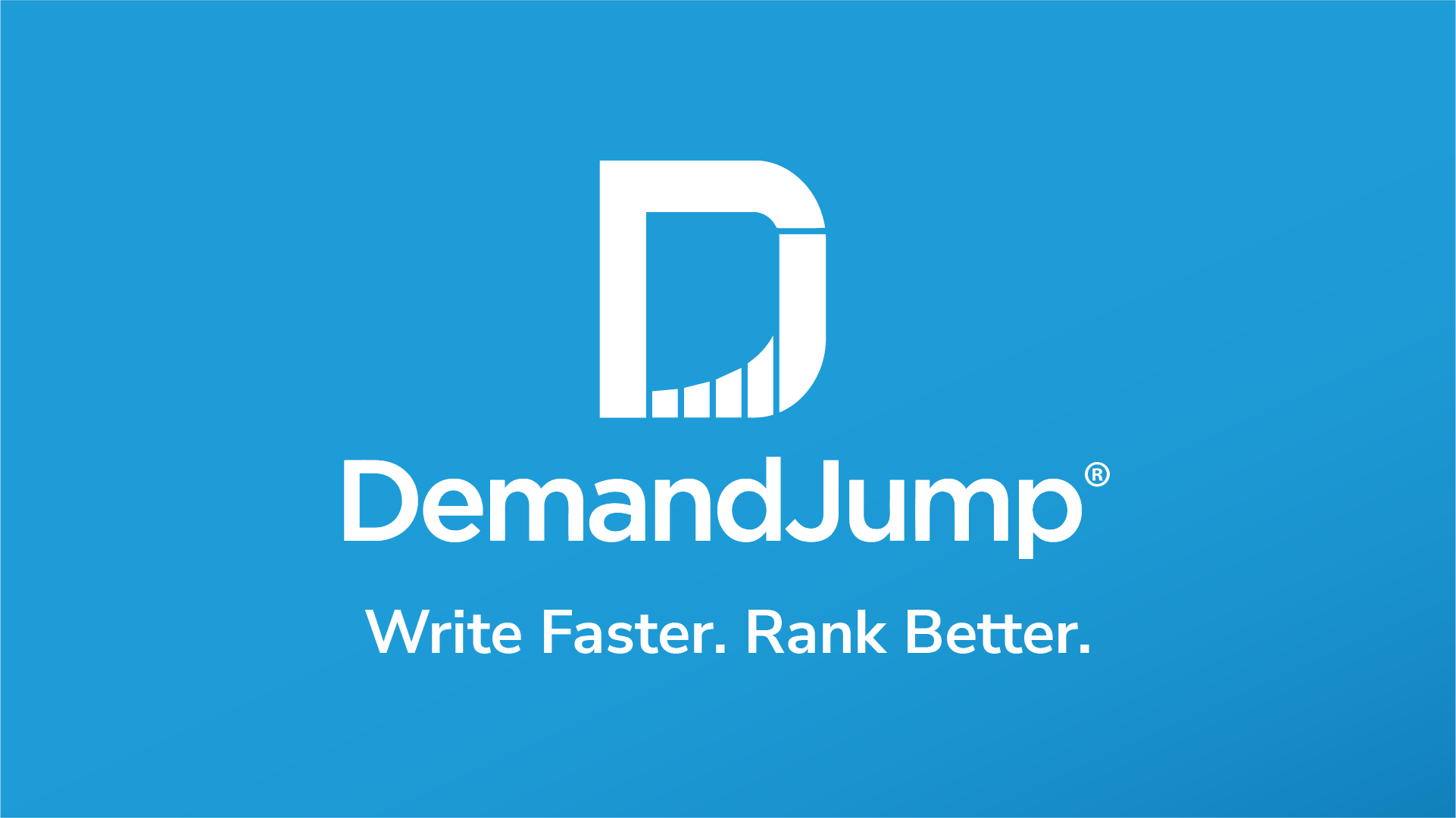Pillar-Based Marketing (PBM), lock that term away in your brain and remember it. If you are in the marketing world, and are unfamiliar with this term, it is not just a new spin-off of an old favorite (Account-Based Marketing), it is the future of SEO and organic lead generation. PBM efforts are driven by content on all fronts. In this guide, we will cover what a PBM strategy is, explain how it works, and show how any business can take advantage of this strategy regardless of industry.
What is a Pillar-Based Approach?
Most marketers are familiar with ABM and are wary about switching strategies, which leads many of them to ask how PBM works. At its core, a pillar-based approach or strategy to marketing revolves around an interconnected web of content that utilizes keywords and questions to serve the promotion of a business. One of the best ways to approach this strategy is to think of your content as a living, breathing content ecosystem. All of the pieces of content surrounding a chosen topic will work together to deliver page one results. So, what are these pieces of content going to be? In a PBM strategy, there are three types of content you will publish: a pillar, sub-pillar, and blog. Let's break this down further.
Pillar Page:
This is the longest form of content inside a PBM strategy. A pillar page will be around 3,000 words in length and include 15 to 20 high-level keywords. This page should be a high-level guide with a short title. For example, if you are an accounting firm that provides various services to both companies and individuals, then a good pillar might be "Accounting Services."

Sub-Pillar Pages:
A sub-pillar page is a slightly more specific topic than the pillar page, but is still something that will fall under the umbrellas of the pillar. These pieces of content will range from 1,500 to 2,000 words and contain around a similar number of keywords as a pillar (it is okay for a sub-pillar to have fewer keywords than a pillar). For every pillar, you should have three sub-pillars. These sub-pillar topics are more specific than the pillar topic. In keeping with our accounting example, some sub-pillar topics could include “Full-Service Accounting”, “Tax Accounting”, and “Small Business Accounting.” All of these topics are still quite general but relate back to the "Accounting Services" pillar page.
Supporting Blog Pages:
The supporting blog pages work alongside the sub-pillar pages that all link back to the pillar page. These smaller pieces of content will typically be around 750 to 1000 words, and contain roughly four to six keywords. For every sub-pillar page, there will be three blog pages accompanying them. The main difference here is that the blogs will be much more specific, and the title will normally be a question. For the “Tax Season” sub-pillar, a fitting blog topic could be "How Do I File My Taxes?" This answers your target audience's question and allows you the perfect opportunity to plug your own services to the reader.
 We understand that this is a lot of information to take in, and as the leading authority on PBM strategies we’re here to answer all frequently asked questions.
We understand that this is a lot of information to take in, and as the leading authority on PBM strategies we’re here to answer all frequently asked questions.
What if I Have Multiple Topics That are Too Similar?
- For PBM, it is important to understand that it is very unlikely that a user will read every single blog, sub-pillar, and pillar you create and notice repetition. People are going to use different search terms but will want a similar answer. Answering the same question that's asked in different ways casts a wider net and helps you rank higher. You want to make sure you have the answer for your target audience's popular searches.
Will My Content Be Competing With Itself?
- Only if you write identical pieces of content, and this is where the keywords come into play. You can have two almost identical blog topics, but if you include entirely different keywords and questions, then you will be able to publish unique pieces of content that will cast as wide a net around a searched topic as possible.
When Should I Publish the Content and in What Order?
- The best way to get the most out of a PBM campaign is to publish the content as soon as possible, and in descending order. This creates a hierarchical structure to content and helps establish your organization as an authority on a topic. It also helps ensure that you're using the most up-to-date keywords since search data is ever-changing. Lastly, you can also upgrade pieces after they are published as your business or the industry changes.

What is a PBM Platform?
Without a quality PBM platform, you will have to guess what topics are important, which keywords to use, and figure out how your competition is ranking, which will not deliver the results you are hoping for.
Thankfully, DemandJump is here to save the day. All of those features and more are located inside our platform. We offer a full-service solution that makes creating quality content that ranks an effortless process. DemandJump tells you exactly what topics to write about, which keywords to use, and where you rank among your competitors so you can win page one rankings.
What if your company is unable to write its own content? Don't worry, our DemandJump content team can write for you. This means all you need to do is approve of and publish the content. Then you can sit back and enjoy the benefits.
With that being said, feel free to perform a PBM platform comparison to discover what our team or others can provide your organization. While you do not need to use a PBM platform, as we mentioned earlier, we suggest that your organization think about what content can do when utilized correctly. For years, outdated information like cramming every keyword you can think of into a piece plagued the content marketing landscape. Continuing this cycle will only result in wasted time and energy.
How to Implement a PBM Strategy?
It is not necessary to already have a pillar, sub-pillar, and supporting blog topics in mind before you begin developing your PBM strategy, but having some high-level topics or ideas in mind is a great place to start. To get the most out of implementing this kind of campaign, you need to identify an essential topic, product, or service related to your business. This does not have to become your pillar topic, but it will be helpful to use as a building block for future pillar pages.
One of the many great features of a PBM strategy is that you can start using it whether this is your company's first dive into content or whether you have written thousands of blogs over the years. While it is easier for our technology to work from scratch to generate entire plans for you, we are still able to take existing content and optimize it.
We understand that you are the experts in the service or product that you provide to customers, but our team can help you identify the best topics to engage with your audience. The key is finding those high-value keyword phrases that your audience is searching for. You have likely seen some successful PBM campaign examples without even knowing it. To help drive home how anyone makes use of this strategy, let's look at a sample.
Pillar Topic:
Sub-Pillar Topics:
- Customer Success Analytics
- Types of Customer Success
- Customer Success Metrics
Blog Topics:
- What are the Key Customer Success Metrics?
- What is the Best Customer Success Management Software?
- How Does a Company Measure Customer Success?
Can I take a Pillar-Based Marketing Course?
Yes, you can! Even with the right tools to begin this strategy, there is still the question of "how do I run a successful PBM campaign?" PBM is more than implementing a strategy, it also involves maintaining that long-term success from your content. A fantastic way to stay ahead of the curve is always to try and learn more about the process. Taking a PBM course is excellent for both individual marketers and organizations as it shows dedication to understanding these newer methods. DemandJump offers an advanced new course called DJ University that allows anyone to get a free certification in pillar-based marketing.
In our comprehensive course, we'll teach you all of the necessary vocabulary and strategies and give quality examples that you can run with in your next campaign.
DemandJump: Taking Content to the Next level
Marketing is constantly evolving, but content marketing is here to stay. There is no better way to generate organic leads than by creating keyword-driven content that caters to the needs of your target audience. Using our platform means you'll know precisely what to create and thus, save significant time planning your content calendar.
A bright new marketing future is just one click away.












 We understand that this is a lot of information to take in, and as the leading authority on PBM strategies we’re here to answer all frequently asked questions.
We understand that this is a lot of information to take in, and as the leading authority on PBM strategies we’re here to answer all frequently asked questions.